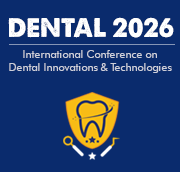Title : Evaluation of buccal wall thickness in class 1 defects filled with BioOss in the GAP in immediate implants. A long-term evaluation with computed tomography
Abstract:
Class 1 defects are characterized by gaps between the implant surface and the intact bone walls. Owing to the resorptive processes starting immediately following extraction of the tooth, Class 1 defects are formed mainly in situations where immediate implant placement is performed (Type 1 placement). Human studies concluded that the placement of grafting material filling the marginal infrabony defects around implants, that were placed in the sockets immediately after tooth extraction, contributes to a more complete resolution of the defect and preservation of the alveolar process. In anterior sites the therapy is also directed at increasing the buccal contour to achieve a pleasing appearance of the peri-implant soft tissues. There are very few scientific studies that have long-term results on the stability of the buccal bone wall in cases of class 1 defects treated with bioOss. Our study evaluated the stability of the alveolar buccal wall in sites with defects class 1( intact buccal bone) that received immediate implants and bioOss in the Gap.The stability of the dimensions of the buccal walls formed was evaluated tomographically for a period of 2 to 12 years. Results will be presented at the conference.
Audience Take Away:
- The public will receive consistent data on the stability of BioOss in class 2 defects,
- The stability of the grafts provides long-term security in the aesthetic success of implants placed in these sites,
- Knowledge of the stability of grafts in the sites gives surgeons confidence to offer security of long term aesthetic results.



